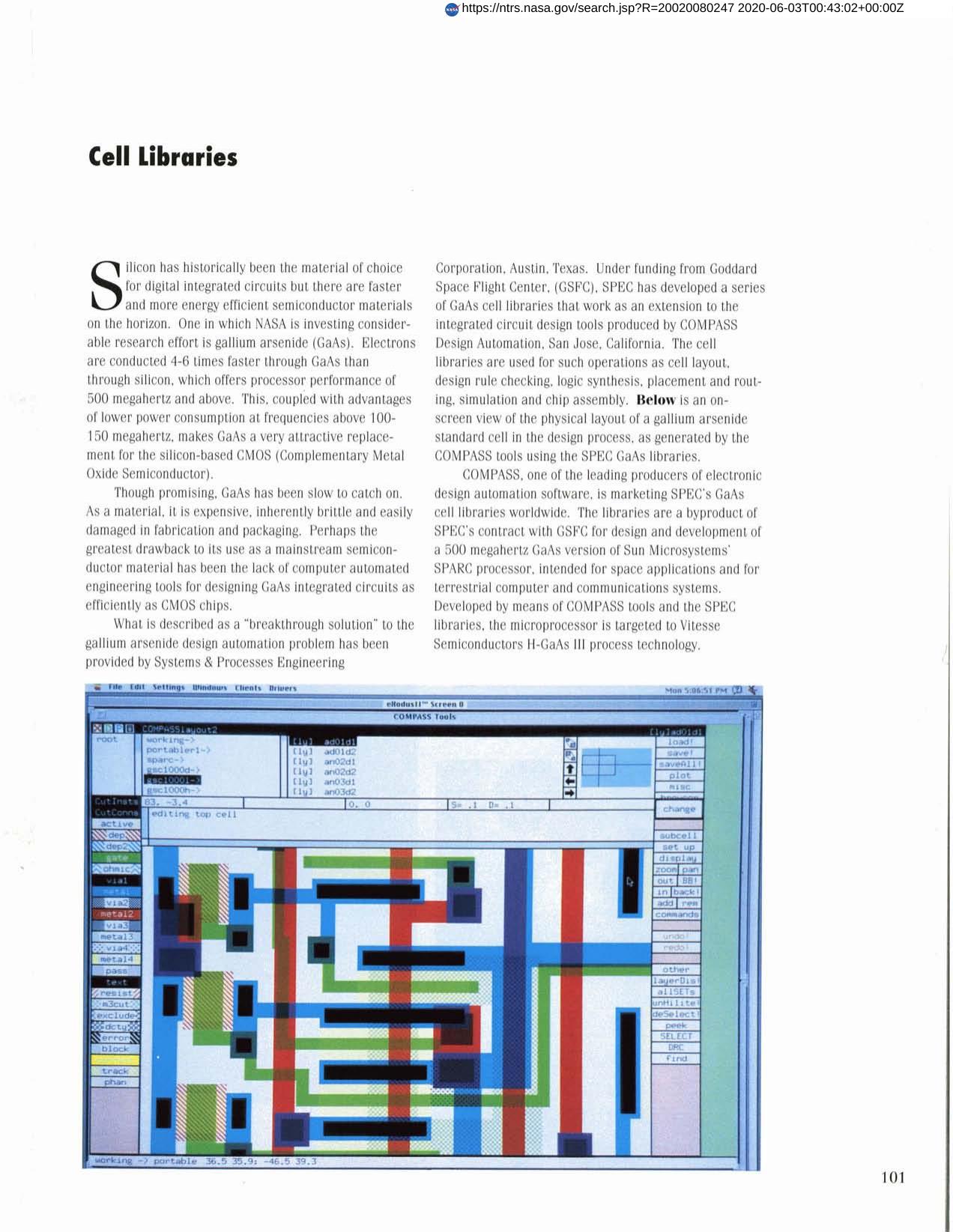
Cell Libraries
Originally published in 1994
Body
A NASA contract led to the development of faster and more energy efficient semiconductor materials for digital integrated circuits. Gallium arsenide (GaAs) conducts electrons 4-6 times faster than silicon and uses less power at frequencies above 100-150 megahertz. However, the material is expensive, brittle, fragile and has lacked computer automated engineering tools to solve this problem. Systems & Processes Engineering Corporation (SPEC) developed a series of GaAs cell libraries for cell layout, design rule checking, logic synthesis, placement and routing, simulation and chip assembly. The system is marketed by Compare Design Automation.
Full article: http://hdl.handle.net/hdl:2060/20020080247
Abstract
A NASA contract led to the development of faster and more energy efficient semiconductor materials for digital integrated circuits. Gallium arsenide (GaAs) conducts electrons 4-6 times faster than silicon and uses less power at frequencies above 100-150 megahertz. However, the material is expensive, brittle, fragile and has lacked computer automated engineering tools to solve this problem. Systems & Processes Engineering Corporation (SPEC) developed a series of GaAs cell libraries for cell layout, design rule checking, logic synthesis, placement and routing, simulation and chip assembly. The system is marketed by Compare Design Automation.

Cell Libraries

Cell Libraries













